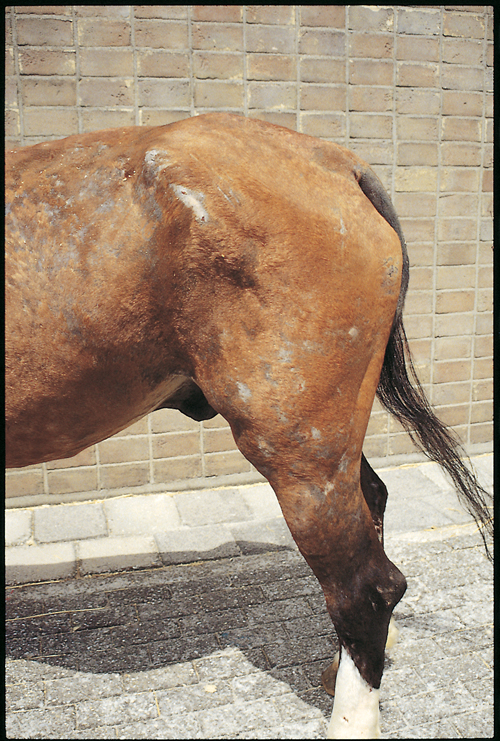Equine Internal Medicine Q&A 21
| This question was provided by Manson Publishing as part of the OVAL Project. See more Equine Internal Medicine questions |
You are asked to examine an 18-year-old Warmblood gelding that has developed progressive alopecia, which started in the neck region. Haematological evaluation reveals a haematocrit of 30% (n = 36–42%) and a normal leucocyte count (8.9x109/l with 21% lymphocytes, 1% eosinophils and 78% neutrophils). The total serum protein concentration is normal (81g/l with 31.7% albumin, 14.3% alpha-globulins, 29.4% beta-globulins and 24.6% gamma-globulins). Basal T4 concentration is low.
| Question | Answer | Article | |
| What is the most likely endocrinopathy to cause these lesions? | Hypothyroidism. Thyroid dysfunction is rare in the horse. Equine hypothyroidism can be classified into four groups:
Hypothyroidism in foals is usually associated with prognathism, ruptured tendons, forelimb contracture, delayed ossification of the carpal and tarsal bones, and goitre. The prognosis is extremely poor. |
Link to Article | |
| Which three thyroid hormones can you name, and how are they controlled? | Thyroglobulin is the prohormone of the thyroid hormones
Once released into the circulation, the hormones are rapidly bound to plasma proteins and only 0.2% T3 and 0.06% T4 is free or unbound. Only the free forms are biologically active. |
Link to Article | |
| Does diet influence the plasma concentrations of these hormones? |
|
[[|Link to Article]] | |
| What is the euthyroid sick syndrome? |
|
Link to Article | |
